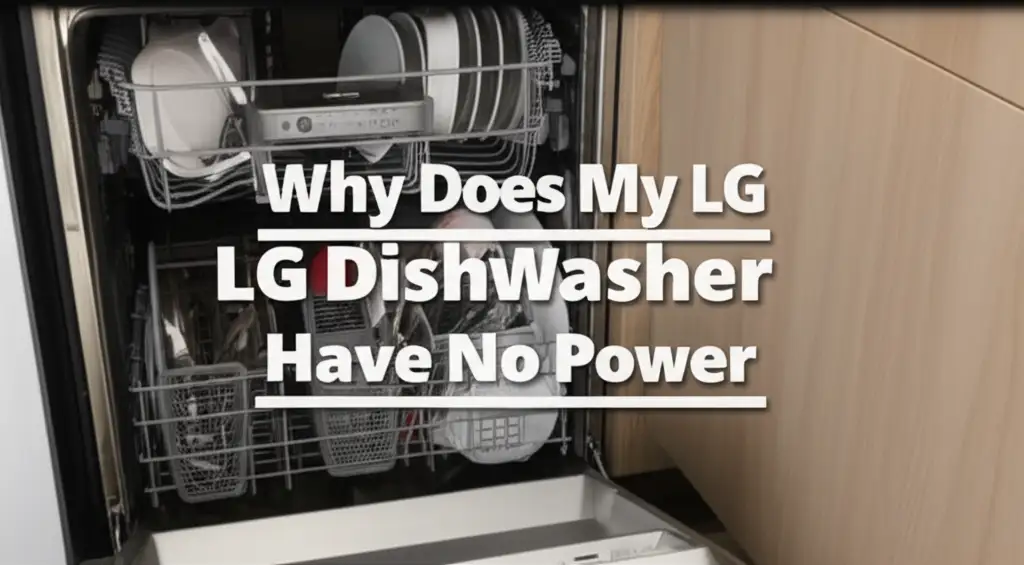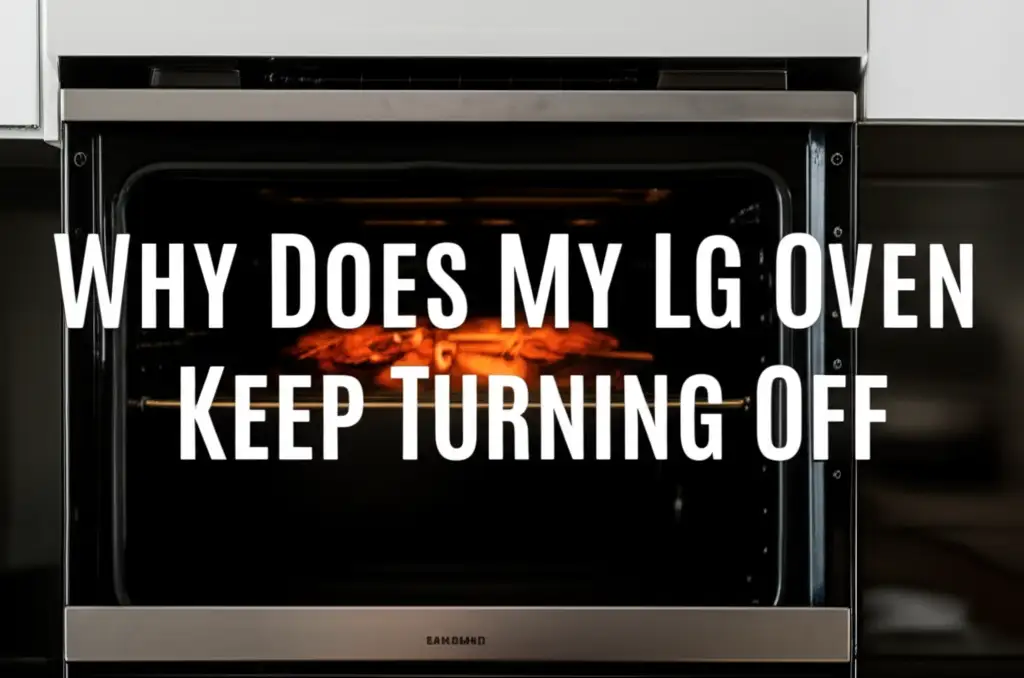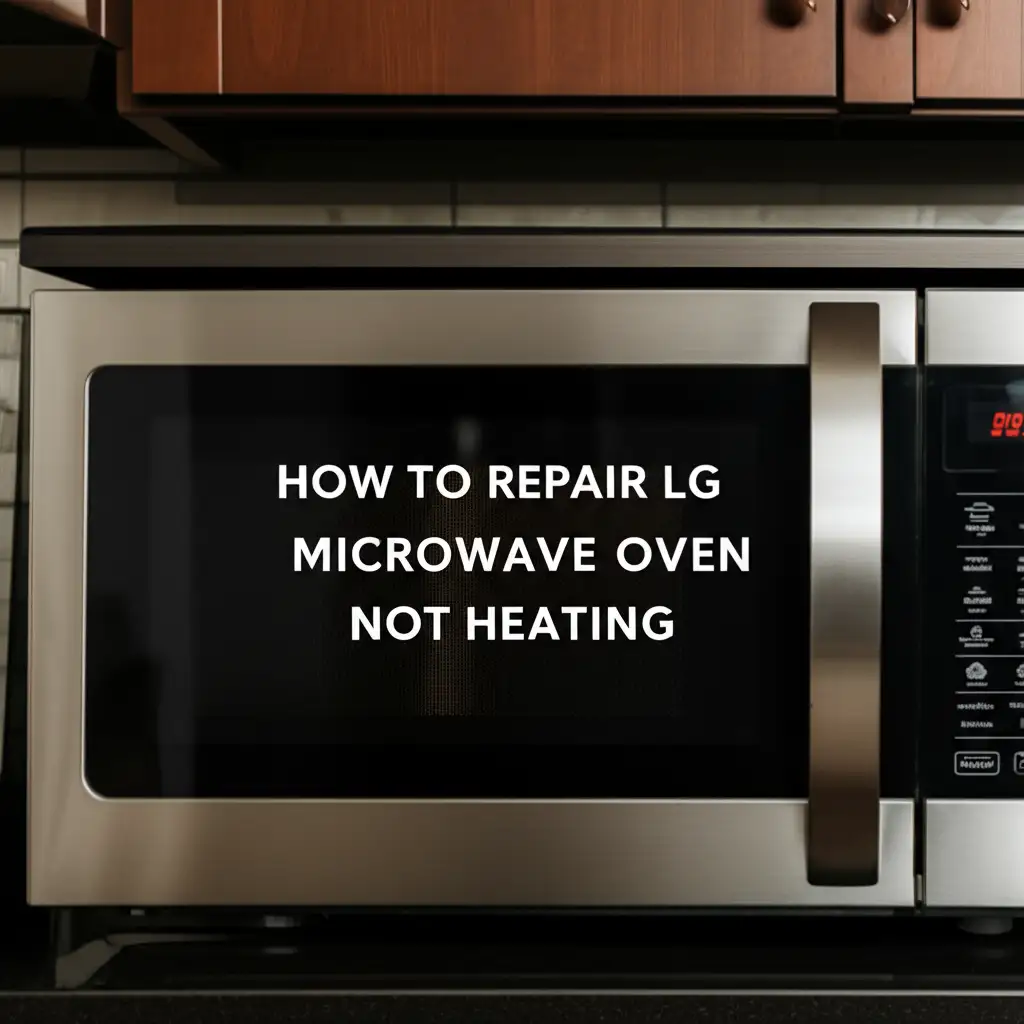· Todd Martin · Home Appliances · 20 min read
Why Does My Lg Dishwasher Have No Power

LG Dishwasher No Power? Here’s Why.
Imagine loading your dirty dishes, eager for a sparkling clean outcome, only to find your LG dishwasher completely unresponsive. No lights, no sounds, just a silent appliance. This can be frustrating, especially when your kitchen routine depends on it. An LG dishwasher with no power can stop your household in its tracks. You need to know what to do when this happens. I understand how disruptive this issue can be.
This guide will help you understand common reasons why your LG dishwasher has no power. We will explore simple troubleshooting steps you can perform yourself. You can often fix these problems without calling a technician. We cover everything from basic power checks to internal component issues. By the end, you will have a clear path to get your dishwasher running again.
Takeaway
- Always check basic power sources first.
- Inspect the door latch and thermal fuse.
- Consider a control board reset or replacement.
- Safety is important; disconnect power before internal checks.
An LG dishwasher typically has no power due to an interruption in its electrical supply. This often comes from a tripped circuit breaker, a faulty power outlet, or a problem with the dishwasher’s internal components like the thermal fuse, door latch switch, or the main control board.
Checking the Power Supply to Your LG Dishwasher
When your LG dishwasher has no power, the first step is always to check its electrical connection. This seems obvious, but it is a common oversight. Many issues stem from simple power interruptions. Ensuring your appliance receives power is fundamental. I always start here myself.
Verifying the Circuit Breaker
Your home’s electrical panel contains circuit breakers. Each breaker protects a specific circuit, including the one for your dishwasher. If the dishwasher draws too much power or an electrical fault occurs, the breaker will trip. This cuts off power to prevent damage. You should locate your main electrical panel.
Find the circuit breaker labeled for your kitchen or dishwasher. It might be in the “OFF” position or somewhere in between “ON” and “OFF.” If it is tripped, firmly push it to the “OFF” position first. Then, push it back to the “ON” position. Wait a few moments, then check your dishwasher for power. If it trips again immediately, there is likely a short circuit within the dishwasher or its wiring. This requires professional attention. I have seen many people overlook this simple check.
Inspecting the Power Outlet and Cord
Sometimes, the problem lies directly with the power source. Your LG dishwasher plugs into a dedicated wall outlet. The outlet itself might be dead. Plug another small appliance, like a lamp or a phone charger, into the same outlet. If the other appliance does not work, the outlet has no power. This could be due to a tripped GFCI outlet (Ground Fault Circuit Interrupter) or a wiring issue in the wall. You can test GFCI outlets by pressing the “RESET” button.
Also, examine the dishwasher’s power cord. It should be securely plugged into the outlet. Check for any visible damage to the cord, such as fraying or cuts. A damaged power cord can prevent electricity from reaching the appliance. It can also pose a safety hazard. If the cord is damaged, it needs replacement by a qualified technician. I once found a pet had chewed a power cord, causing similar issues. You can also review how other dishwashers handle power issues by reading about why a Samsung dishwasher has no power.
Testing for Voltage (Optional)
For those comfortable with electrical testing, you can use a multimeter. This tool measures voltage. Set the multimeter to measure AC voltage. Carefully insert the probes into the power outlet slots. You should read around 120 volts. If the reading is zero or significantly lower, the outlet is the problem, not the dishwasher. Always exercise caution when working with electricity. If you are unsure, do not attempt this step. I only recommend this if you have experience with electrical work.
Ensuring a stable power supply is your first line of defense. Many LG dishwasher no power issues resolve here. If the power supply checks out, we need to look deeper into the appliance itself. Other appliance brands also face similar power challenges; learning about why a GE dishwasher does not have power can offer additional context.
Issues with the Door Latch and Switch
Your LG dishwasher features a crucial safety mechanism: the door latch system. This system ensures the dishwasher door is securely closed and locked before any cycle can begin. If the dishwasher thinks the door is open, even by a tiny bit, it will not power on. This is a common reason why an LG dishwasher has no power. It is a safety feature to prevent water leaks. I have seen this issue many times.
Inspecting the Door Latch Mechanism
The door latch is the part that holds the door shut. It engages with a strike plate on the dishwasher tub. Over time, the latch can become misaligned or worn. Close the dishwasher door firmly. You should hear a distinct click. If the door feels loose or does not click into place, the latch might be the problem. Inspect the latch assembly for any visible damage. Look for bent or broken plastic parts. The strike plate on the tub can also become loose. Tighten any screws holding it in place.
Sometimes, food debris or detergent residue can build up around the latch. This prevents it from engaging properly. Clean the latch area thoroughly with a damp cloth. Make sure there are no obstructions. A clean latch ensures a proper connection. This simple cleaning step can often fix the problem.
Testing the Door Latch Switch
Inside the door latch mechanism, there is a small electrical switch. This switch signals to the control board that the door is closed. If this switch fails, the dishwasher will not receive the “door closed” signal. It will then remain unpowered. You might need to access the switch. This usually involves removing screws around the inner perimeter of the door. Be careful not to damage any wires.
Once you access the switch, you can test it with a multimeter. Set the multimeter to continuity mode. With the door open, the switch should show an open circuit (no continuity). When you manually depress the switch, it should show a closed circuit (continuity). If it does not change, the switch is faulty. A bad door latch switch needs replacement. This specific component is vital for operation. A non-functional switch is a direct cause for an LG dishwasher no power situation. For similar issues, you might find information on why an LG dishwasher keeps turning off helpful, as a faulty latch can also cause mid-cycle shutdowns.
Addressing Child Lock or Demo Mode
LG dishwashers often come with a child lock feature. This feature prevents accidental operation by children. If the child lock is activated, the dishwasher may appear to have no power. It might also show a lock icon on the display. Refer to your LG dishwasher manual for specific instructions on how to deactivate the child lock. This usually involves pressing and holding a combination of buttons for a few seconds.
Similarly, a dishwasher might be stuck in “demo mode” or “showroom mode.” This mode allows the display and buttons to light up without the dishwasher actually running or drawing water. This can make it seem like there is no power for actual operation. It is common for new installations. Check your manual for how to exit demo mode. It often involves holding specific buttons for a period. These modes are designed to prevent full operation, appearing as a no-power state. They are simple to resolve once identified. I always advise checking the manual first for these settings. If your dishwasher has power but won’t start, looking at why a GE dishwasher has power but will not start could provide more insights.
Malfunctioning Control Board
The control board is the brain of your LG dishwasher. It manages all functions, from sensing the door to controlling wash cycles. If the control board malfunctions, it can lead to various issues, including a complete lack of power. A faulty control board sends no signals to other components. This means the dishwasher remains inactive. I often compare it to a computer’s motherboard.
Signs of a Failing Control Board
A dead control board usually results in no display lights and no response from any buttons. You might also notice a burning smell from the dishwasher if a component on the board has shorted out. Intermittent power issues could also point to a control board problem. Sometimes, the dishwasher might power on briefly then immediately shut off. If you have checked the power supply and door latch, a control board issue becomes a strong possibility. It is one of the more serious LG dishwasher no power causes.
Resetting the Control Board
Before considering replacement, try resetting the control board. A simple reset can sometimes clear minor glitches. Unplug the dishwasher from the wall outlet. If it is hardwired, turn off the circuit breaker dedicated to the dishwasher. Leave the power disconnected for at least 5 to 10 minutes. This allows the board to fully discharge any residual electricity. After the waiting period, restore power by plugging it back in or flipping the breaker on. This hard reset can often resolve temporary electronic issues. I always recommend this step before any complex diagnosis.
Replacing a Faulty Control Board
If a reset does not restore power, the control board might be faulty. Replacing a control board is a more involved repair. It requires basic electrical knowledge and careful handling of components. You need to order the correct replacement board for your specific LG dishwasher model. Always disconnect power to the dishwasher before attempting any internal repairs. The control board is typically located behind the front kick plate or inside the control panel on the door. It connects via numerous wires and harnesses.
Carefully disconnect all wires, noting their positions or taking pictures. Then, remove the old board and install the new one. Reconnect all wires securely. This repair can be expensive. If you are not comfortable with electronic repairs, it is best to consult a professional technician. A control board replacement can be the last resort when your LG dishwasher no power situation persists. You might find it interesting to see how these issues compare to other appliances, such as why a GE microwave has no power.
Thermal Fuse Failure
The thermal fuse is a critical safety device in your LG dishwasher. It is designed to protect the dishwasher from overheating. If the internal temperature of the dishwasher rises to an unsafe level, the thermal fuse will blow. This cuts off all power to the appliance. It acts as a sacrificial part to prevent more serious damage or fire. When it blows, your LG dishwasher will have no power at all. This is a common cause for a completely dead dishwasher.
Locating the Thermal Fuse
The thermal fuse is typically located near the main control board or attached to the heating element circuit. Its exact location can vary by LG dishwasher model. You will likely need to remove the outer door panel or the kick plate at the bottom of the dishwasher to access it. It usually looks like a small, cylindrical component with two wires attached to it. Always consult your LG dishwasher’s service manual or a parts diagram for the precise location. I always check the manual first for specific component locations.
Testing the Thermal Fuse
You can test the thermal fuse for continuity using a multimeter. First, ensure the dishwasher is completely unplugged or its circuit breaker is off. Disconnect the wires leading to the thermal fuse. Set your multimeter to the continuity setting. Touch one probe to each terminal of the fuse. A working thermal fuse will show continuity, indicating a closed circuit. If the fuse is blown, the multimeter will show no continuity (an open circuit). This means the fuse has failed and needs replacement. A blown fuse is a definitive reason for an LG dishwasher no power issue.
Replacing a Blown Thermal Fuse
If the thermal fuse tests bad, you must replace it. It is not repairable. Purchase an exact replacement part for your LG dishwasher model. Installing a new thermal fuse involves carefully attaching the wires to the new fuse terminals. Ensure the connections are secure. Remember that a thermal fuse blows for a reason. While replacing it might restore power, you should also investigate what caused the overheating.
Common causes of overheating include:
- A faulty heating element.
- A malfunctioning thermostat.
- A problem with the main control board sending incorrect signals.
- Lack of water fill causing the heating element to run dry.
If you do not address the underlying cause, the new thermal fuse might blow again. I always recommend looking for the root problem. Sometimes, if your LG dishwasher keeps turning off, a failing thermal fuse or overheating could be the reason, making why an LG dishwasher keeps turning off another relevant read.
Water Inlet and Float Switch Issues
While less direct to “no power” in the sense of the appliance being completely dead, problems with the water inlet or float switch can prevent the dishwasher from starting. If your LG dishwasher has no power to start a cycle, these components are worth checking. They can prevent the control board from initiating any operations. The dishwasher will not power up if it thinks there is a flood risk or no water to begin with.
Inspecting the Water Inlet Valve
The water inlet valve controls the flow of water into the dishwasher. If this valve is faulty, it might not allow water to enter the tub. Some dishwashers will not power on or start a cycle if they do not detect water filling. Check the water supply hose connected to the valve at the back of the dishwasher. Ensure the water supply valve under your sink is fully open. A kinked or blocked water supply hose can also restrict water flow.
You can test the water inlet valve for continuity with a multimeter if you suspect an electrical fault within the valve itself. Ensure power is disconnected. This valve needs power to open. If it is not getting power, the issue might be upstream (e.g., control board). If it gets power but does not open, the valve is bad. A completely unresponsive dishwasher, however, usually points to power being cut before the water inlet valve even gets a signal. But if your LG dishwasher no power is specifically “no power to start”, check this.
Examining the Float Switch
The float switch is a safety device located at the bottom of the dishwasher tub. It prevents overfilling. If water levels rise too high, a float lifts, activating a switch. This signals the control board to stop water intake. If the float switch gets stuck in the “up” position, the dishwasher’s control board will think there is an overflow. It will prevent the dishwasher from powering on or starting any cycle. It will act as if there is a flood.
To check the float switch:
- Remove the lower dish rack and spray arm.
- Locate the plastic float cup at the bottom of the tub.
- Manually push the float down to ensure it moves freely.
- Clean any debris or residue around the float that might be causing it to stick.
You can also test the float switch for continuity with a multimeter. When the float is down (normal position), the switch should show continuity. When lifted (overflow position), it should show no continuity. If it is stuck or faulty, it needs replacement. A faulty float switch can contribute to an LG dishwasher no power symptom by preventing the operational sequence from beginning. Similar issues can impact other appliance brands, so looking at why a KitchenAid dishwasher has no power might offer more insights.
Motor and Pump Issues (Indirect Power Impact)
While a faulty motor or pump might not directly cause an LG dishwasher to have “no power” in the sense of a completely dead appliance, a severe electrical fault within these components can trip the circuit breaker. This would then result in no power to the dishwasher. They are crucial for the dishwasher’s operation. A locked rotor or a short circuit in the motor can draw excessive current. This overcurrent triggers the circuit breaker, cutting off all electricity.
The Wash Motor
The wash motor is responsible for circulating water through the spray arms during the wash cycle. If the motor seizes up or develops an internal short, it will try to draw more current than the circuit can safely provide. This immediately trips the circuit breaker. When the breaker trips, your LG dishwasher will appear to have no power. You would need to reset the breaker, but the dishwasher would likely trip it again if the motor is faulty.
Signs of a faulty wash motor include:
- Humming noise without water circulation.
- Water not spraying effectively.
- A burning smell.
- Repeated circuit breaker trips when the dishwasher tries to start.
Inspecting the motor usually requires disassembling the lower part of the dishwasher. This is a more complex repair. I recommend this only for experienced DIYers.
The Drain Pump
The drain pump removes dirty water from the dishwasher at the end of a cycle. Similar to the wash motor, a seized or shorted drain pump can also cause an overcurrent condition. This will trip your home’s circuit breaker. If the circuit breaker trips as soon as you try to start the dishwasher, or when it would normally begin a drain cycle, the drain pump might be the culprit.
To check the drain pump, you often need to access it from beneath the dishwasher. Look for any foreign objects that might be jamming the impeller. A jammed pump can cause it to draw excessive current. If no obstruction is found, the pump motor itself might have failed. Testing the electrical windings of the pump with a multimeter can confirm a short circuit. Replacing a pump often involves disconnecting hoses and electrical connections. These types of failures lead to a symptomatic LG dishwasher no power issue by interrupting the electrical supply at the source. Understanding general power loss in appliances, such as why a GE dishwasher suddenly has no power, can offer broader context.
Professional Help and Advanced Diagnostics
After performing basic troubleshooting steps, you might find that your LG dishwasher still has no power. At this point, the issue could be more complex. It might involve components that are harder to diagnose or replace. This is when professional help becomes valuable. A qualified appliance technician has specialized tools and knowledge. They can quickly pinpoint the exact problem.
When to Call a Technician
Consider calling a professional if:
- You have checked the circuit breaker and power outlet, and they are working fine.
- You have confirmed the door latch and thermal fuse are functional.
- You have reset the control board, but the dishwasher remains dead.
- You notice any burning smells or visible smoke.
- The circuit breaker trips repeatedly as soon as you reset it or try to start the dishwasher.
- You are uncomfortable performing internal electrical tests or component replacements.
- The issue seems to stem from the control board, motor, or other major components.
A technician can perform advanced diagnostics. They can check specific voltage readings to different components. They can also use diagnostic modes on the dishwasher. These modes help identify error codes. They have access to LG’s technical service information. This information guides them to specific troubleshooting paths. Their expertise minimizes the risk of further damage to your appliance. It also ensures your safety.
Cost of Repairs
The cost of repair varies depending on the faulty part and labor rates in your area. Minor repairs, like replacing a door latch switch or thermal fuse, are generally less expensive. Major component replacements, such as the control board or motor, can be costly. Sometimes, the repair cost approaches the price of a new dishwasher. A technician can provide an estimate before performing the work. This helps you decide whether to repair or replace the appliance.
Preventing Future Power Issues
Regular maintenance can help prevent future LG dishwasher no power problems.
- Clean the door latch area: Prevent debris buildup.
- Avoid overloading: Excessive load can strain the motor.
- Regularly clean filters: Ensure proper drainage and prevent pump strain.
- Check power cords: Ensure they are not damaged or kinked.
- Run hot water before starting: This helps clear the drain line, reducing pump strain.
By being proactive, you can extend the life of your LG dishwasher. You can also reduce the chances of sudden power loss. If you are experiencing repeated power loss, such as your GE dishwasher keeps losing power, it might indicate an intermittent electrical fault.
FAQ Section
How do I reset my LG dishwasher when it has no power?
To reset your LG dishwasher, unplug it from the wall outlet. If it is hardwired, turn off the dedicated circuit breaker at your home’s electrical panel. Leave the power disconnected for at least 5 to 10 minutes. This allows the internal components, especially the control board, to fully discharge. After the waiting period, restore power by plugging it back in or flipping the breaker to “ON.”
Can a bad thermal fuse cause an LG dishwasher to have no power?
Yes, a bad or blown thermal fuse is a common reason an LG dishwasher has no power. The thermal fuse is a safety device designed to cut off all power to the dishwasher if it overheats. Once it blows, it creates an open circuit, preventing any electricity from reaching the appliance. It needs replacement if it fails.
Where is the circuit breaker for an LG dishwasher?
The circuit breaker for your LG dishwasher is located in your home’s main electrical service panel. This panel is often in a basement, utility closet, or garage. Look for a breaker labeled “Dishwasher,” “Kitchen,” or the appropriate room. It will be a single switch that can be flipped to “ON” or “OFF.”
Why does my LG dishwasher have power but won’t start?
If your LG dishwasher has power but won’t start, the issue is different from “no power.” Common reasons include a faulty door latch switch (not sending the “closed” signal), activated child lock or demo mode, a clogged filter, or an issue with the water inlet valve or float switch. The control board might also be faulty, preventing cycle initiation despite receiving power. You might find related information on why an LG dishwasher is not turning on.
What is demo mode on an LG dishwasher?
Demo mode, or showroom mode, allows the dishwasher’s display and buttons to function for demonstration purposes without actually running a wash cycle or filling with water. This can make the appliance seem like it has no power for normal operation. Refer to your LG dishwasher manual for specific instructions on how to deactivate demo mode, as it varies by model.
How long do LG dishwasher thermal fuses last?
The lifespan of an LG dishwasher thermal fuse is not fixed. It is designed to last indefinitely unless an overheating event occurs. A thermal fuse only blows when the dishwasher’s internal temperature exceeds a safe limit, indicating another underlying problem with the appliance, such as a faulty heating element or control board, rather than an inherent lifespan issue.
Conclusion
Finding your LG dishwasher with no power can certainly disrupt your daily routine. However, many common causes are fixable with some basic troubleshooting. We have explored several key areas. We started with the basics like checking your power supply at the outlet and circuit breaker. We then looked at crucial safety components like the door latch and thermal fuse. We also touched upon the central control board and less direct issues like float switches and motor problems.
Remember to prioritize safety. Always disconnect power before performing any internal checks or repairs. By systematically working through these troubleshooting steps, you can often diagnose and resolve the issue yourself. If you have done all you can and your LG dishwasher still has no power, do not hesitate to reach out to a certified appliance technician. They have the expertise to handle complex electrical and component failures. Taking action will get your LG dishwasher back to full operation, making your kitchen life much smoother.
- LG dishwasher troubleshooting
- dishwasher no power fix
- appliance power issues
- LG appliance repair
- dishwasher electrical problems





